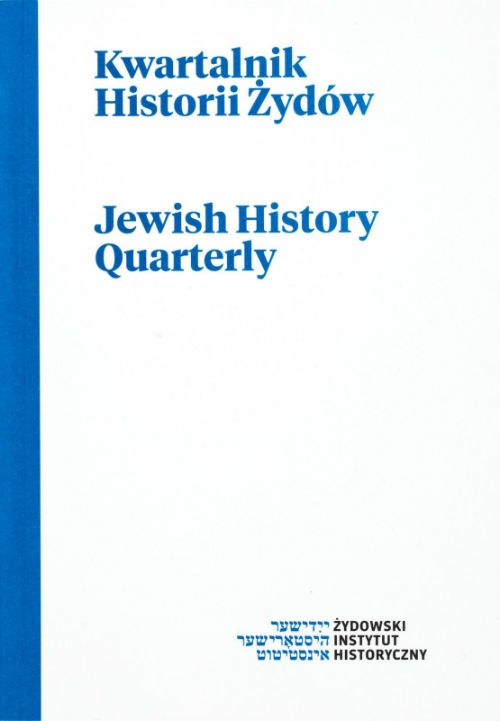„Mezuza patrzyła na krzyż” - o spotkaniu polskich Żydów ze światem chrześcijańskim podczas Zagłady na wybranych przykładach prozy wspomnieniowej
„Mezuza Looked at the Crucifix” – about the Encounter of Polish Jews with the Christian World Based on Selected Items of Memoiristic Prose
Author(s): Anna PiątekSubject(s): History
Published by: Żydowski Instytut Historyczny
Keywords: Holocaust; hiding; monastery; Christianity; Jew; memory
Summary/Abstract: This article is an attempt to describe and compare the experiences of Jewish children and adult Polish Jews, hiding during the war with Christian families or Catholic monasteries. The source materials for this study were selected memoirs, auto-fiction texts, fictionalized recollection novels and stories inspired by the authors’ biographies. The purpose of the publication was not to reconstruct the historical truth about the experience of the time of the Holocaust but to present the way in which the authors narrated their experiences in their works, how they remembered then and transformed in a literary fashion. Due to the exceptional quality of the children’s experiences, impressions and reminiscences, the analysis focuses on the works of those authors who survived the war as children (Biskup and Q i pensjonarka by Jadwiga Maurer, Czarne sezony and Kręgi obcości by Michał Głowiński, Dziewczynka by Alona Frankel, W ogrodzie pamięci by Joanna Olczak-Ronikier). The analysis also encompassed two texts about the wartime fate of adult persons, recorded while in hiding or shortly after the war, which is particularly valuable in the case of deliberations about remembrance (Pamiętnik Marii Koper by Henryk Grynberg, Krzyż i mezuza by Helena Szereszewska). The emphasis in the analysis is on the experiences of the hiding persons – part of which were shared with most Jews trying to survive the Holocaust, while others were unique experiences of an emotional and spiritual nature. There is a detailed analysis of those passages in the works which describe the reception of Christianity: the feelings connected with the monastic atmosphere, enchantment with art and rituals, emotional identification with Christianity’s most important figures, relations with Christian custodians, the learning of prayers and rites and actual religious involvement. There is also a focus on identity, on the ways the children coped with their new Catholic identify and their attitude to their authentic Jewish one. One important element of the analysis were the reflections about memory, what, how and why the protagonists of these texts remembered from that period. In the summary of the article it is said that the authors of the literary texts analysed in it differed in terms of age, gender, educational status, historical knowledge, social origin, degree of religiousness, level of self-reflection and the manner of describing their experiences. However, what they have in common are the shared experience described in this study, the emotions, sentiments, impressions and reminiscences. Another thing they have in common is the fact that the time spent in a Catholic monastery or a with a Christian family became such a fundamental experience for the authors that the memory was present in their works, often becoming the leitmotif itself.
Journal: Kwartalnik Historii Żydów
- Issue Year: 249/2014
- Issue No: 01
- Page Range: 214-234
- Page Count: 21
- Language: Polish
- Content File-PDF

